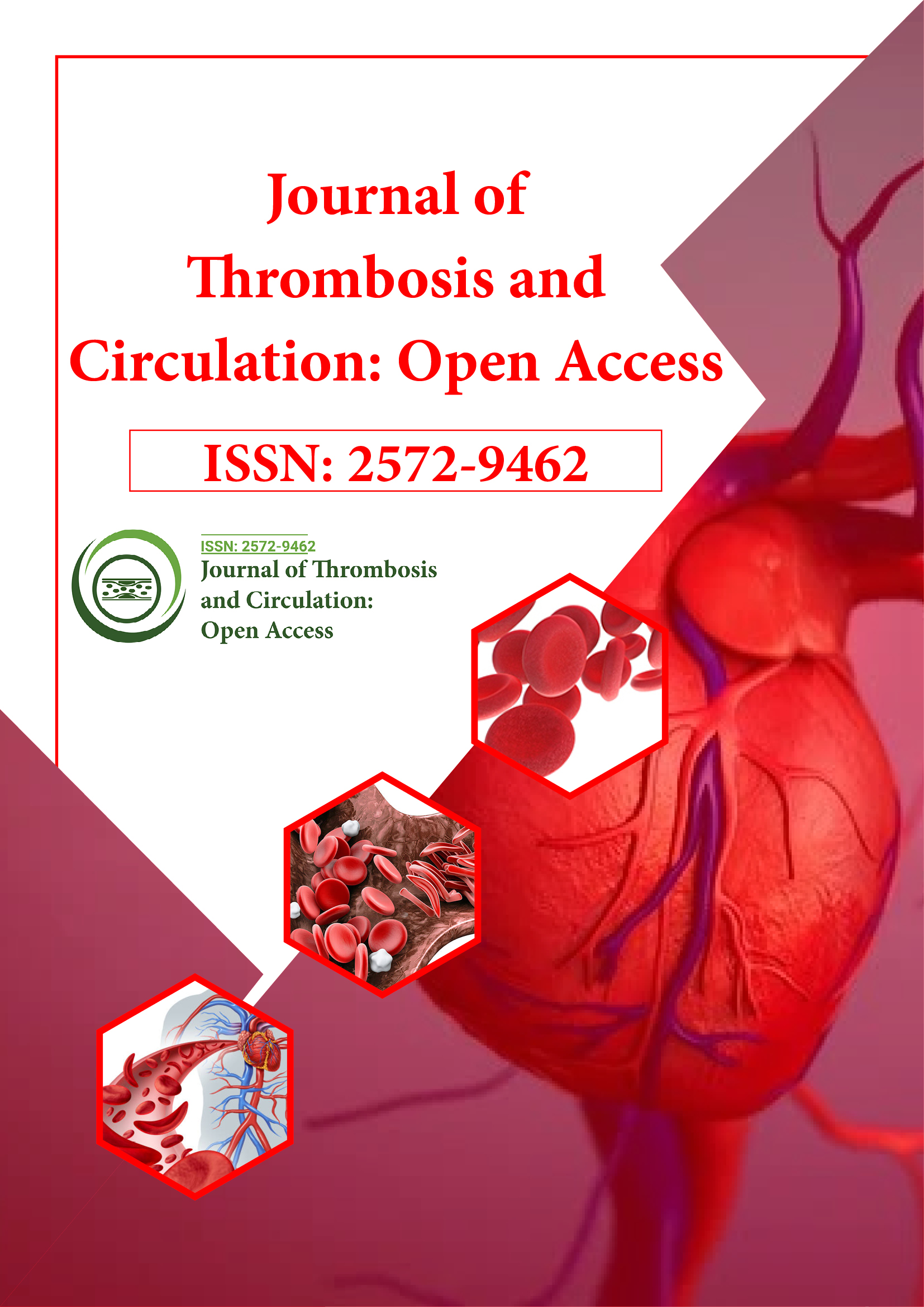Indexed In
- RefSeek
- Hamdard University
- EBSCO A-Z
- Publons
- Google Scholar
Useful Links
Share This Page
Journal Flyer

Open Access Journals
- Agri and Aquaculture
- Biochemistry
- Bioinformatics & Systems Biology
- Business & Management
- Chemistry
- Clinical Sciences
- Engineering
- Food & Nutrition
- General Science
- Genetics & Molecular Biology
- Immunology & Microbiology
- Medical Sciences
- Neuroscience & Psychology
- Nursing & Health Care
- Pharmaceutical Sciences
Perspective - (2024) Volume 10, Issue 3
Early Stenting in IVCS and Acute DVT: Advancing Venous Disease Management
Grace Walker*Received: 30-Aug-2024, Manuscript No. JTCOA-24-21420; Editor assigned: 02-Sep-2024, Pre QC No. JTCOA-24-21420 (PQ); Reviewed: 16-Sep-2024, QC No. JTCOA-24-21420; Revised: 23-Sep-2024, Manuscript No. JTCOA-24-21420 (R); Published: 30-Sep-2024, DOI: 10.35248/2572-9462.24.10.284
Description
The combination of Iliac Vein Compression Syndrome (IVCS) and acute Deep Venous Thrombosis (DVT) presents a significant challenge in venous disease management. IVCS, characterized by the extrinsic compression of the iliac vein (commonly by the overlying right iliac artery), predisposes patients to venous stasis, creating a fertile environment for thrombogenesis. When IVCS occurs alongside acute DVT, the risk of long-term complications, such as Post-Thrombotic Syndrome (PTS), increases substantially. In this context, venous stenting has emerged as a promising therapeutic intervention to address the underlying mechanical obstruction while restoring venous patency.
Recent clinical experiences suggest that early stenting in patients with IVCS combined with acute DVT is associated with favorable outcomes, particularly in terms of symptom relief, clot resolution and prevention of recurrent thrombosis. By addressing the anatomical compression, stenting not only facilitates effective thrombolysis or anticoagulation but also reduces the risk of chronic venous insufficiency by restoring unobstructed venous flow. One of the key benefits of early stenting is its potential to mitigate the long-term sequelae of venous hypertension, such as leg pain, swelling and venous ulcers. Acute management of DVT traditionally focuses on anticoagulation to prevent clot propagation and embolization. However, when IVCS is the underlying etiology, anticoagulation alone may not suffice, as the persistent mechanical obstruction predisposes patients to recurrent thrombosis. Stenting addresses this gap by providing a durable solution that directly targets the root cause of venous stasis.
Several studies have reported promising short-term outcomes following iliac vein stenting in this patient population. Improvements in pain and swelling are often observed within days to weeks post-procedure, significantly enhancing the quality of life for affected individuals. Furthermore, early stenting has been shown to improve clot resolution when combined with Catheter-Directed Thrombolysis (CDT). By restoring venous patency, stenting facilitates the rapid clearance of thrombus, which is critical for preventing PTS and reducing the risk of pulmonary embolism. Despite these advantages, early stenting is not without challenges.
The optimal timing of intervention remains a topic of debate, as stenting in the acute phase carries the risk of complications such as in-stent restenosis or stent migration due to the dynamic inflammatory and thrombotic environment. Moreover, the technical expertise required for successful stent placement underscores the importance of a multidisciplinary approach involving vascular surgeons, interventional radiologists and hematologists. Patient selection is critical, as inappropriate stenting in unsuitable candidates can lead to suboptimal outcomes or complications.
Long-term data on the durability of stenting in IVCS combined with DVT are limited, emphasizing the need for robust clinical trials and registries to evaluate outcomes such as stent patency, recurrence of thrombosis and development of PTS. The interplay between anticoagulation therapy and stent performance also warrants further investigation to optimize treatment protocols and minimize complications. Additionally, understanding the cost-effectiveness of early stenting compared to conservative management will provide valuable insights for healthcare policymakers.
In conclusion, early stenting for IVCS combined with acute DVT represents a paradigm shift in venous disease management. By addressing the anatomical and hemodynamic components of this complex condition, stenting offers a comprehensive solution that significantly improves early clinical outcomes. While promising, the long-term efficacy and safety of this approach require further validation through rigorous research. Nevertheless, the combination of stenting into the therapeutic armamentarium for IVCS-associated DVT holds the potential to transform the management and prognosis of this challenging condition, creating the path for improved patient care and quality of life.
Citation: Walker G (2024). Early Stenting in IVCS and Acute DVT: Advancing Venous Disease Management. J Thrombo Cir. 10:284.
Copyright: © 2024 Walker G. This is an open-access article distributed under the terms of the Creative Commons Attribution License, which permits unrestricted use, distribution, and reproduction in any medium, provided the original author and source are credited.
